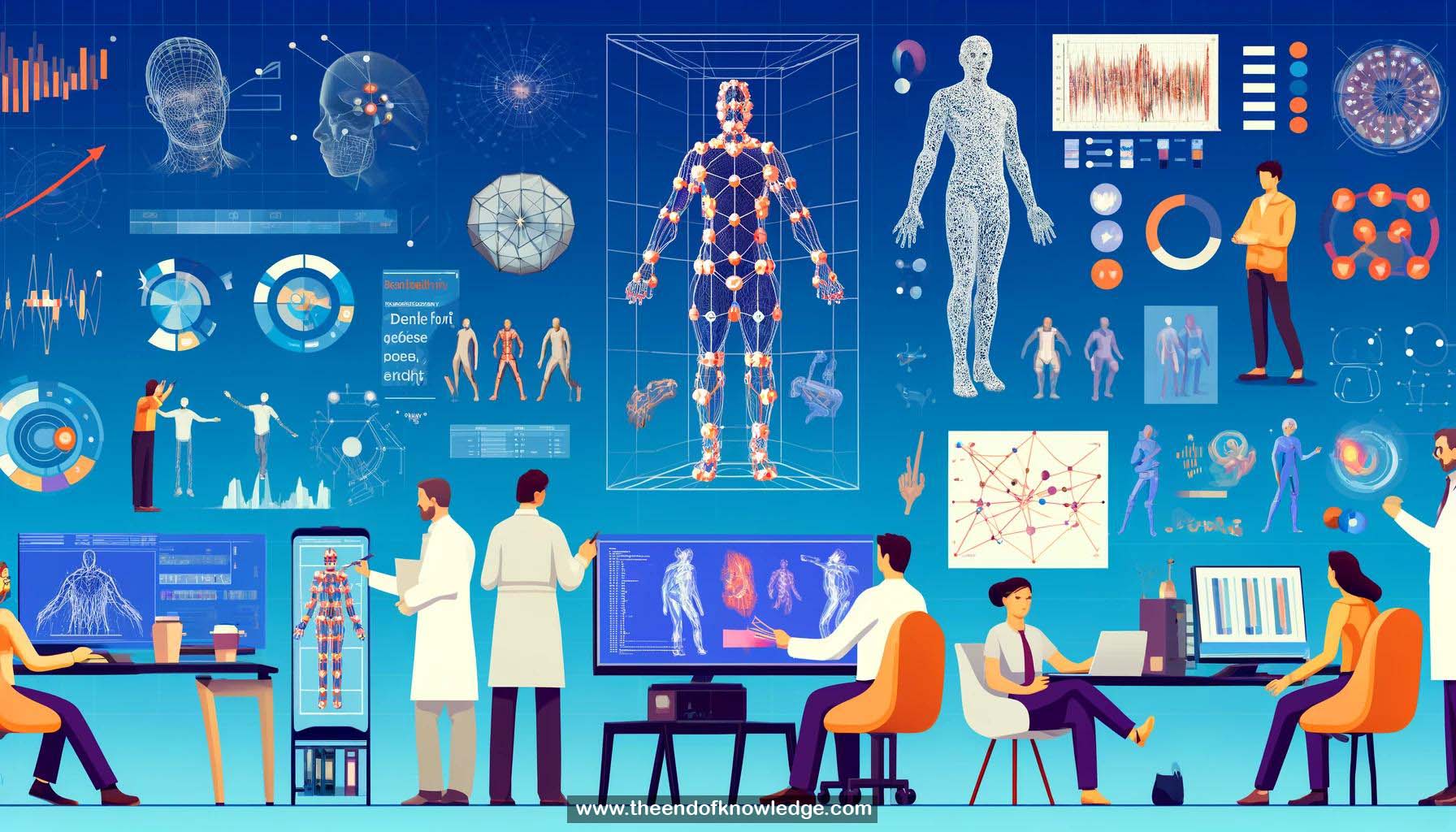 >
>
Concept Graph & Resume using Claude 3 Opus | Chat GPT4o | Llama 3:
Resume:
1.- DensePose estimates dense human pose by mapping image pixels to a 3D surface model of the body.
2.- It extends beyond keypoint-based pose estimation to provide correspondences between all human pixels and thousands of mesh points.
3.- The human body surface is partitioned into patches, each associated with local UV coordinates.
4.- A large-scale dataset was constructed with manual annotations of image-to-surface correspondences on 50,000 COCO images.
5.- An efficient two-stage annotation pipeline was used, first segmenting parts then mapping sampled points to the 3D surface.
6.- Accuracy of annotations was evaluated using synthetic data, finding prominent visual cues enable precise labeling.
7.- Discriminative training is used to learn dense pose estimation from the large annotated dataset.
8.- The DensePose R-CNN architecture performs real-time dense pose estimation, processing video at multiple frames per second.
9.- Three outputs are predicted - part classification for each pixel, and U/V coordinate regression within parts.
10.- Evaluation is done using geodesic distance metrics measuring correspondence accuracy between image points and the surface.
11.- DensePose shows large improvements over model-fitting approaches like SMPLify while being much faster.
12.- Training on real annotated images (DensePose-COCO) gives superior results compared to training on fitted or synthetic data.
13.- Architectural choices were analyzed, finding multi-task learning and cross-task connections boost performance substantially.
14.- Qualitative results demonstrate robustness to scale, occlusion, appearance variation, and smooth predictions over video sequences.
15.- The system handles multiple people simultaneously and runs in real-time on a single GPU.
16.- Potential applications are shown, like transferring textures densely from the 3D model to images.
17.- Code and dataset are made publicly available to encourage further research on the dense pose estimation problem.
18.- DensePose-COCO and DensePose-PoseTrack challenges are announced for ECCV 20
19.- The approach focuses on correspondences to a template shape, not estimating a specific 3D pose and shape for each image.
20.- Keypoint detection as an auxiliary task provides the largest boost to dense pose estimation performance.
21.- Cross-talk between different network heads, especially from keypoints to dense pose, helps the model significantly.
22.- Hands, face and feet have the most accurate correspondences while less visual distinctive areas like the torso have higher errors.
23.- The system is trained to correspond pixels to the underlying body even when obscured by clothes and accessories.
24.- A per-instance evaluation measure called Geodesic Point Similarity (GPS) is introduced, extending OKS from keypoints to dense correspondence.
25.- Using a larger backbone network (ResNet-101 vs 50) gives diminishing returns in accuracy-speed trade-off.
26.- Image-to-surface correspondence is established in two steps: assigning part labels, then regressing U-V coordinates within parts.
27.- The model is trained end-to-end using dense correspondence as supervision, without any model fitting at test time.
28.- A single system can perform multiple tasks including bounding box/keypoint detection, masking and dense pose estimation.
29.- Part segmentations and U-V fields predicted by the system are visualized to qualitatively assess performance and failure modes.
30.- Dense pose estimation opens up new possibilities for detailed human understanding beyond sparse keypoints.
Knowledge Vault built byDavid Vivancos 2024